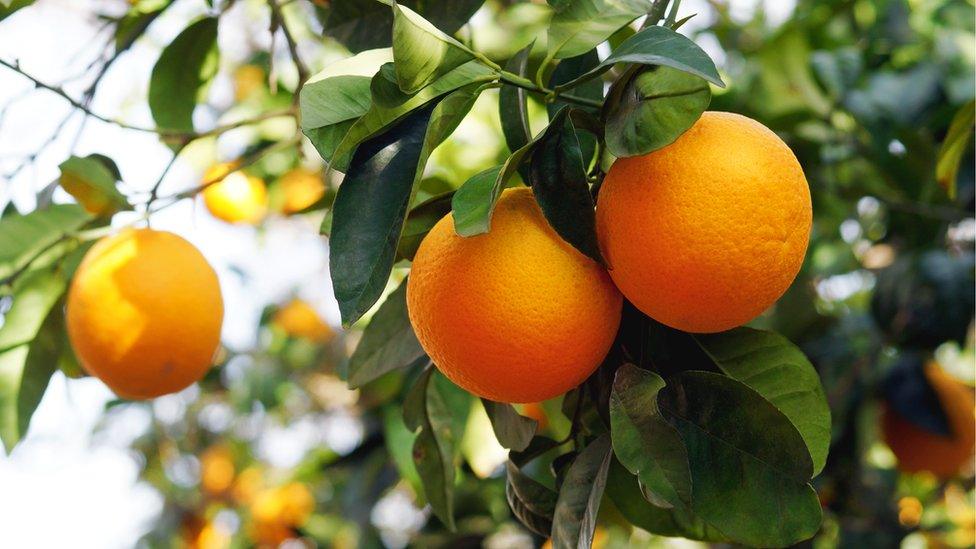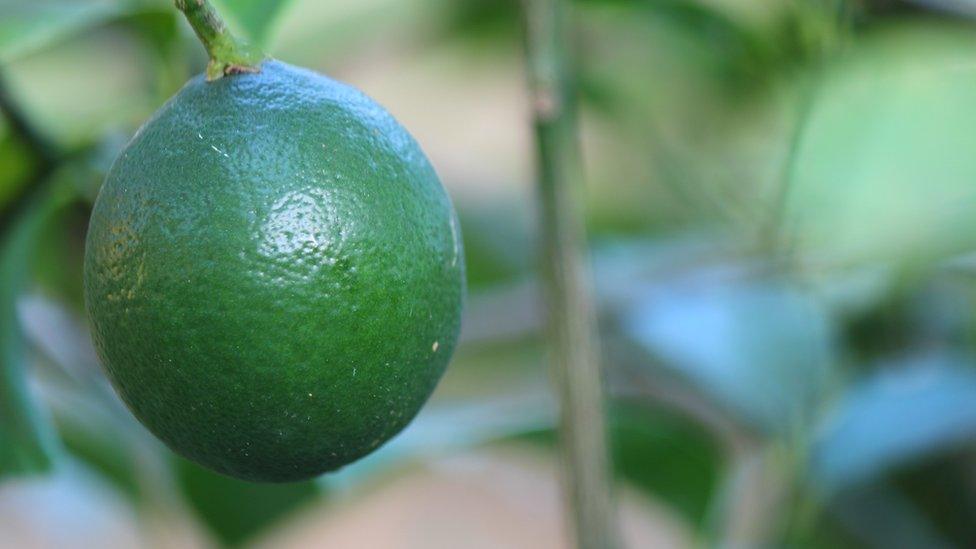DNA story of when life first gave us lemons
- Published

Oranges are the result of thousands of years of human selection
All citrus fruits can trace their roots to the southeast foothills of the Himalayas, according to DNA evidence.
The first citrus trees appeared about eight million years ago, before spreading around the world, say international scientists.
The trees eventually gave rise to the fruit on our kitchen tables, from sweet oranges to bitter lemons.
Citrus trees are among the most widely cultivated fruit trees in the world, but their history has been unclear.
To get a better understanding of where citrus trees came from, scientists in the US and Spain analysed the genomes of over 50 varieties of citrus fruit, from the Chinese mandarin to the Seville orange.
The study, published in Nature, external journal, found that modern citrus trees derive from several natural species found in a region that includes the eastern area of Assam, northern Myanmar, and western Yunnan.
When the climate changed millions of years ago, bringing weaker monsoons and drier weather, the plants were able to spread out of the Himalayas, and throughout southeast Asia.

Sour limes originally came from Asia
From there, they spread to the rest of the world, including to Australia about four million years ago.
The analysis shows that today's citrus fruits are the result of millions of years of evolution, followed by thousands of years of human plant breeding.
Genetic maps of the different citrus varieties found today may help scientists find out which fruits can withstand pests, and perhaps develop new citrus fruits.
"Understanding the species diversity and genetic relatedness is the first step towards breeding new varieties of citrus fruits, both with desirable flavour and disease-resistance," said lead researcher Guohong Albert Wu of the US Department of Energy Joint Genome Institute.
Commenting on the study, Dr Ilia Leitch of the Jodrell Laboratory at the Royal Botanic Gardens, Kew, external, said the research could lead to better tasting citrus fruits.
"It highlights how the fruits we take for granted have had a complicated history involving migration, cross breeding and swapping DNA between different populations," she said.
"A greater understanding helps to inform future breeding programmes, helping the crops to meet challenges such as climate change and disease, and breed characteristics desired by the consumer."
The fossil record of citrus fruits is poor. However, a fossil citrus leaf found in southwestern China dating to about eight million years ago supports the data from genetic studies.
Follow Helen on Twitter, external.